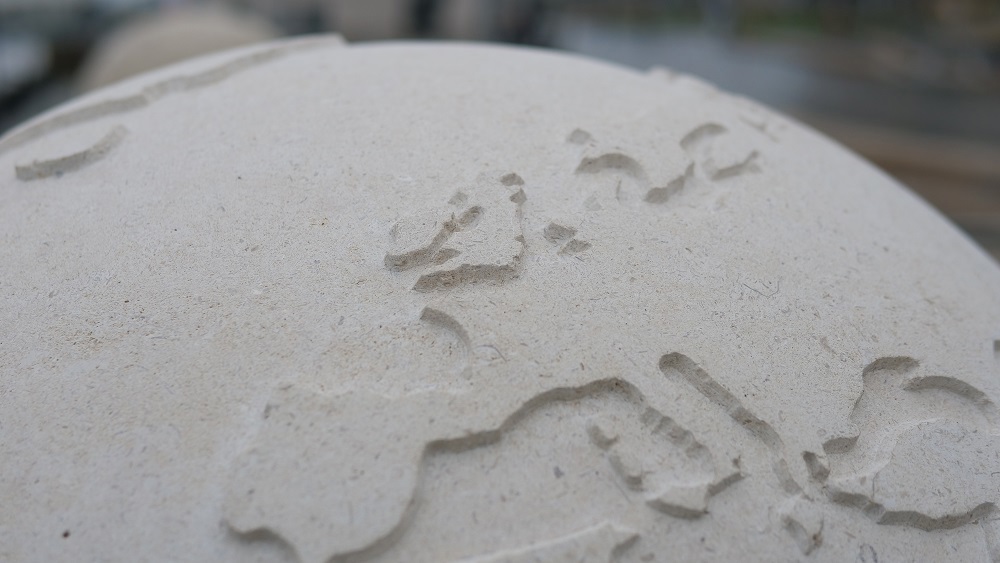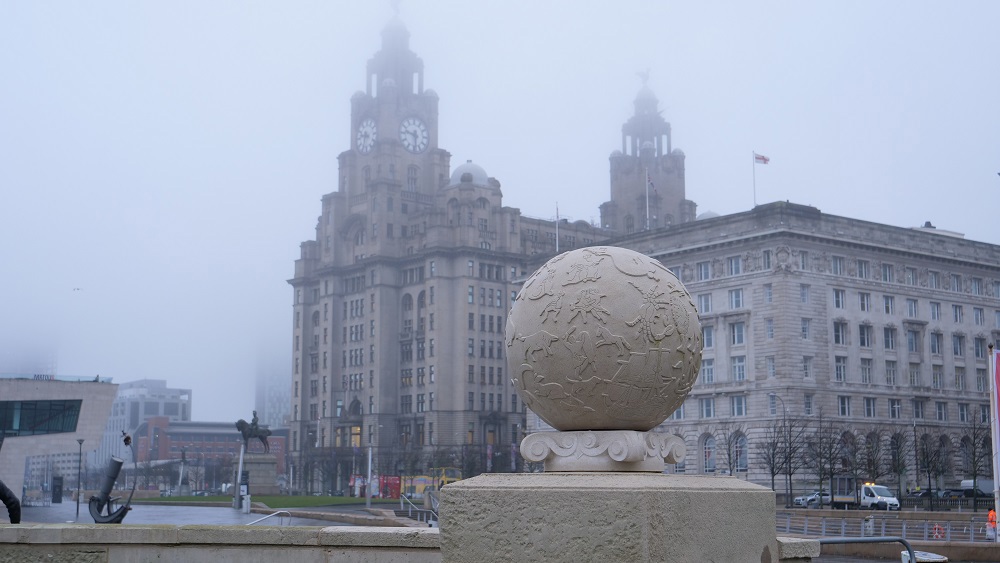22 January 2020
'Once-in-a-generation' restoration for Liverpool war memorial

A ‘once-in-a-generation’ restoration project has been completed at CWGC’s Liverpool Naval Memorial, preserving the stories of 1,400 Merchant Navy men killed in the Second World War.
Two half-tonne Portland stone globes were carefully recreated after decades of exposure to the elements caused damage to these unique features.
Without blueprints the Commission’s stonemasons spent two weeks carefully tracing every millimetre of the intricate designs to hand-carve like for like replacements.
Following more than four months of stonework they were installed on Wednesday 22 January.
The memorial was originally unveiled on 12 November 1952 and marks the official point of commemoration for more than 1,400 seamen. Among them is Carpenter Walter Bradley, a Liverpool local and father-of-six who died on HMS Jervis Bay.

On 5 November 1940 the ship selflessly lured a German warship away from the convoy it was protecting in the mid-Atlantic, costing 190 lives.
As well as local men to Liverpool it remembers crews from around the world who supported Britain’s navy. It was created after the Second World War as a single point to remember the missing dead of the Merchant Navy who served under Royal Navy command.
They came from more than 120 different ships ranging from ocean liners to rescue tugs that had all been requisitioned to help the war effort. In particular, many served on escorts which protected the all-important merchant shipping that kept Britain from starvation while German warships patrolled the Atlantic.
Over the decades the Liverpool Naval Memorial had a turbulent history, regularly being misused and vandalised in the 60s and 70s. Today it stands at the rejuvenated centre of the city’s iconic dockyards. CWGC hopes the recent restoration will mean future generations can be reminded of the sacrifice of these men.

James King, director of CWGC’s UKNA area, said: “The CWGC’s Liverpool Naval Memorial has pride of place at the heart of the city’s docks, a fitting location to remember these 1,400 men who took to the seas and sadly never returned.
“However, this location on the banks of the Mersey means the stone takes a battering from the elements and it’s important we care for this memorial and its intricate design features. This project really was a once-in-a-generation opportunity for our stonemasons to show the kind of skills it takes to preserve our heritage.”
Lynelle Howson, historian for CWGC, said: “The contribution of the Merchant Navy to the World War efforts should never be forgotten. During the Second World War, Liverpool was a crucial port that acted as a gateway to the world.
“Many of the men remembered on this memorial were ordinary civilians who chose a dangerous life at sea helping to protect the vital supplies that kept the country going. In doing so, thousands lost their lives and it’s an honour for CWGC to continue to remember them.”

